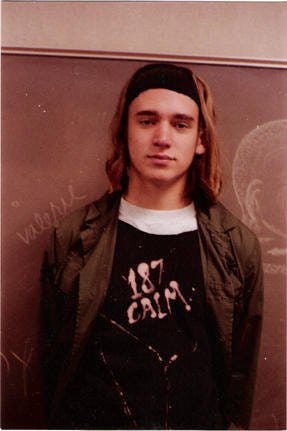How The Cure Played a Part in Creating the In Defense of Ska Podcast
On this week’s IDOS episode, I interviewed my co-host Adam Davis and a few of his Omnigone bandmates about their new ska punk record, Against The Rest. During our talk, Adam and I discussed our long history together as friends. Adam likes to assert that he and I met at a Cure concert in 1992 and that his first thought when he met me was, who punched that guy in the face?
I’ve encountered similar admissions from people over the years. If they’re not wondering how I earned a black eye, they’re curious how I burned my face. Apparently, strangers don’t mind asking other strangers about their latest fistfight or whether they’re burn victims. Most look disappointed when I tell them the purplish diamond on my face is a birthmark, often called a port-wine stain
The Cure, 1992
I don’t recall meeting Adam that day in 1992 at the Cure concert, but I take his word for it. The band was playing at the Spartan Stadium in San Jose, California, on the Fourth of July. I’d always considered them an underground band that only a handful of weirdos knew about, but clearly, the enormity of their fan base warranted a stadium-sized venue. Sure, their song “Friday I’m in Love” had just blown up, but Cure fans were few and far between at the high school I went to in Gilroy, so I was a bit shocked at the thousands of Goths milling about downtown San Jose.
I had gone through several musical identities in my youth, and the only time where I really looked the part was during my Cure and Depeche Mode period. I spent real money on dark, goth-ish clothes and hair products to give my hair that special oomph. By 1992, I’d discovered ska, which quickly became my favorite music. My style shifted to thrift store T-shirts and knee-high shorts, which is where it remains to this day, decades later, for better or worse. Probably worse.
Young Adam Davis
Normie clothes or not, I was excited to be at the Cure concert. My ska sensibility favored small clubs where the crowd was punched in the jaw by every note the band played, free of even an ounce of reverb. Here at the stadium, the Cure was drowning in layers of multicolored audio where individual instruments were hard to pinpoint. They sounded incredible and other-worldly, like a beautiful cacophony of tragedy and discord. Their washed-out, sometimes tranquil, sometimes dissonant songs blended with the night sky, creating a majestic experience almost too ethereal for my teenage brain to comprehend.
That so many people connected with the Cure seemed preposterous, yet proof of their appeal was right there, dancing and swaying before my eyes. I even saw several kids from my high school, like it was the social event of the year, and everyone had to be a part of it.
I never felt sad or joyful or really any strong emotions when I listened to the Cure. I was more obsessed with Robert Smith’s ability to create melodies that sounded so alien that outcasts could feel safe—for a moment, at least. So, it probably makes sense that Adam and I met within the strange embrace of the Cure’s music. Had we not met that day, we might have never become friends, and never conspired to defend ska in podcast form. Our shared oddball tastes certainly have shaped the way we’ve approached creating a ska podcast. So what I’m saying is, Robert Smith needs to be a guest on In Defense of Ska. We have a lot of questions for him!
I’m resurrecting this newsletter. Sign up and read my thoughts about ska, music, death and the meaning of life!


